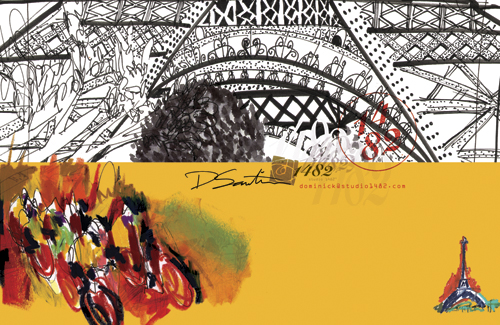
Recently I was visiting a friend’s office, carrying a Studio portfolio that we had prepared for an industry event. Having looked at the book a few hours earlier, my colleague started to hand it back to me and began to ask some questions with a cautious tongue. His reaction was quite surprising to me, knowing his frustration with many of the issues he has dealt with over time as an A.D.—trying to stay cutting edge, different from the norm, and always making an impact. The book was laid out in a fashion he was not familiar with. It was a group book that was intended to be viewed by a mixed lot. We had the opportunity to present a book and it had to target creatives from several industries. The book stayed true with our reportage foundation, context being a key aspect of how our clients use us. We can draw, we can paint, we can illustrate anything, but we shine brightest when we are an integral part of the communication. This book presented that in a variety of forms. What it did not do, as I found out that day, was target my friend. Had my friend been a cold call, we would have given him a book directed to his industry and hopefully not had the same discussion. But this presentation through him off. There were no tear sheets or single illustrations on a page that he has grown quite accustomed to seeing. Our illustration work was laid out in context of the projects, designed into what the job entailed, based on what it was communicating. He wasn’t exactly sure why he had a problem with it, and the funny part was, he admitted it being his problem, not ours. He openly discussed that he thought himself to be a more progressive art director than he was realizing at that moment he truly was. That he would like to think of himself as open and daring, but he was seeing that he was much more conservative than he had ever known. He liked the art. He liked the design. And it had been a long time since he had seen my work, so he was happy to catch up. But in the end, it didn’t appeal to him, because of his problem, which ends up being our problem, if we want him as a client.
The truth is, he does good work, and hires out a bit of illustration. Not necessarily our normal client, but a potential client none the less, and one that understands the value of illustration. In the end we walked away from each other a little more knowledgable of the other’s position. However, I don’t expect to hear from him unless I send a different book, targeted to his needs, which will happen in future rounds of promotions. But in the meantime I am left with a looming question, what happens if the person reviewing your work doesn’t even understand themself. No matter how much research, and how much you analyze your clients, and target your work to their needs, what happens if they don’t see in there own needs what you see? As people who provide a service, we are always finding new ways to connect with clients, to make them understand that we can help build there business. We are not just a supplier of goods, we are meant to be allies, someone to call to aid in completing the work at hand, when the the work involves an expertise just outside our clients realm of understanding. What happens when that understanding, our clients vision, is clouded by their own short sightedness? The idea is to convince them the moment they open your book, this is me and this is how you use what I do. If in that moment you do not connect, then you move on and work towards the next. But if you have the fortune to be graced with the time to talk, take it. Whether you are the illustrator pitching your work, or the art director who is not quite sure what they are looking at but really wants to, take the moment and have the discussion.
I learned quite a bit that afternoon, all of which was just as valuable as the many kudos that we received later that night at the industry gathering, where we were complimented with our ability to use art in our illustration, something that is greatly lacking these days, and still keep it relevant and direct. Comments that seemed to counter every issue that my friend had with break from tradition that he grown so bonded to. I learned a new lesson in targeting our market, and was reminded how important it is to understand who will be looking at the work. Ideas I take for granted, but due to a chance meeting with an old friend, I was reminded just how relevant they are. Never would I have shown my friend that book directly. He knew I had it on me and asked to see it. Just as is normally the case, my mistake turned into a lessson. Never forget your audience. I have the liberty and freedom to show my friend all the work I want to, but had it been anyone else, I would have missed an opportunity to connect with a new client and possibly never get the chance again.

Hi Dom,
I love the new blogs Studio 1482 have created. I’m also glad you are giving voice to a very sensitive area – how to communicate your work. I know that through studios like your own we can educate, and likewise be educated.
Jeanette
Fantastic blog Dominick!
Great article too. Sometimes the tongue is mightier than the pen!
Dominick,
I found your blog early sunday morning, and was enlightened of your discovery in your well penned words. Fantastic thoughts! All great communicators consider their audience… I will remember this!
Sherwin